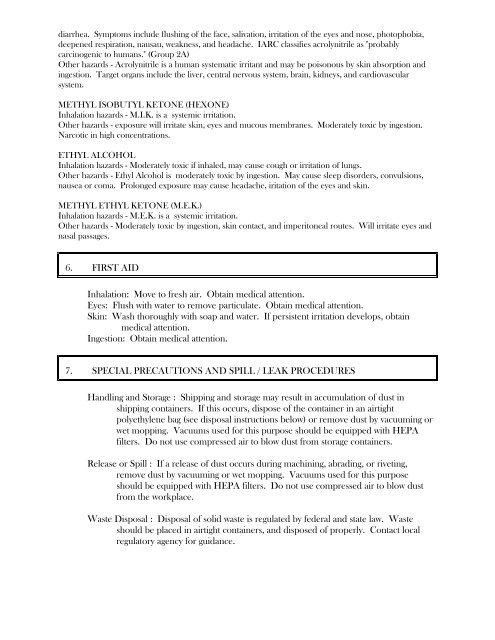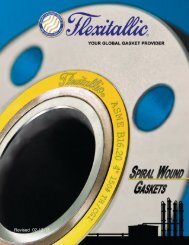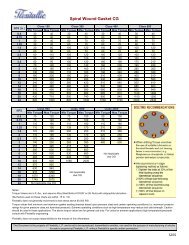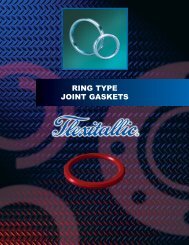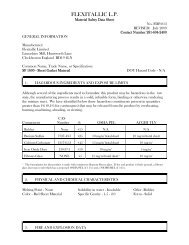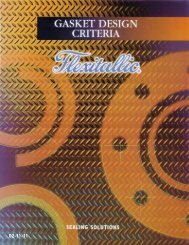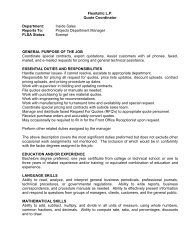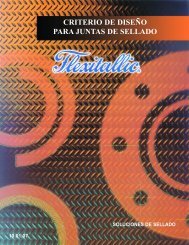SF3300 - The Flexitallic Group
SF3300 - The Flexitallic Group
SF3300 - The Flexitallic Group
You also want an ePaper? Increase the reach of your titles
YUMPU automatically turns print PDFs into web optimized ePapers that Google loves.
diarrhea. Symptoms include flushing of the face, salivation, irritation of the eyes and nose, photophobia,<br />
deepened respiration, nausau, weakness, and headache. IARC classifies acrolynitrile as "probably<br />
carcinogenic to humans." (<strong>Group</strong> 2A)<br />
Other hazards - Acrolynitrile is a human systematic irritant and may be poisonous by skin absorption and<br />
ingestion. Target organs include the liver, central nervous system, brain, kidneys, and cardiovascular<br />
system.<br />
METHYL ISOBUTYL KETONE (HEXONE)<br />
Inhalation hazards - M.I.K. is a systemic irritation.<br />
Other hazards - exposure will irritate skin, eyes and mucous membranes. Moderately toxic by ingestion.<br />
Narcotic in high concentrations.<br />
ETHYL ALCOHOL<br />
Inhalation hazards - Moderately toxic if inhaled, may cause cough or irritation of lungs.<br />
Other hazards - Ethyl Alcohol is moderately toxic by ingestion. May cause sleep disorders, convulsions,<br />
nausea or coma. Prolonged exposure may cause headache, iritation of the eyes and skin.<br />
METHYL ETHYL KETONE (M.E.K.)<br />
Inhalation hazards - M.E.K. is a systemic irritation.<br />
Other hazards - Moderately toxic by ingestion, skin contact, and imperitoneal routes. Will irritate eyes and<br />
nasal passages.<br />
6. FIRST AID<br />
Inhalation: Move to fresh air. Obtain medical attention.<br />
Eyes: Flush with water to remove particulate. Obtain medical attention.<br />
Skin: Wash thoroughly with soap and water. If persistent irritation develops, obtain<br />
medical attention.<br />
Ingestion: Obtain medical attention.<br />
7. SPECIAL PRECAUTIONS AND SPILL / LEAK PROCEDURES<br />
Handling and Storage : Shipping and storage may result in accumulation of dust in<br />
shipping containers. If this occurs, dispose of the container in an airtight<br />
polyethylene bag (see disposal instructions below) or remove dust by vacuuming or<br />
wet mopping. Vacuums used for this purpose should be equipped with HEPA<br />
filters. Do not use compressed air to blow dust from storage containers.<br />
Release or Spill : If a release of dust occurs during machining, abrading, or riveting,<br />
remove dust by vacuuming or wet mopping. Vacuums used for this purpose<br />
should be equipped with HEPA filters. Do not use compressed air to blow dust<br />
from the workplace.<br />
Waste Disposal : Disposal of solid waste is regulated by federal and state law. Waste<br />
should be placed in airtight containers, and disposed of properly. Contact local<br />
regulatory agency for guidance.


